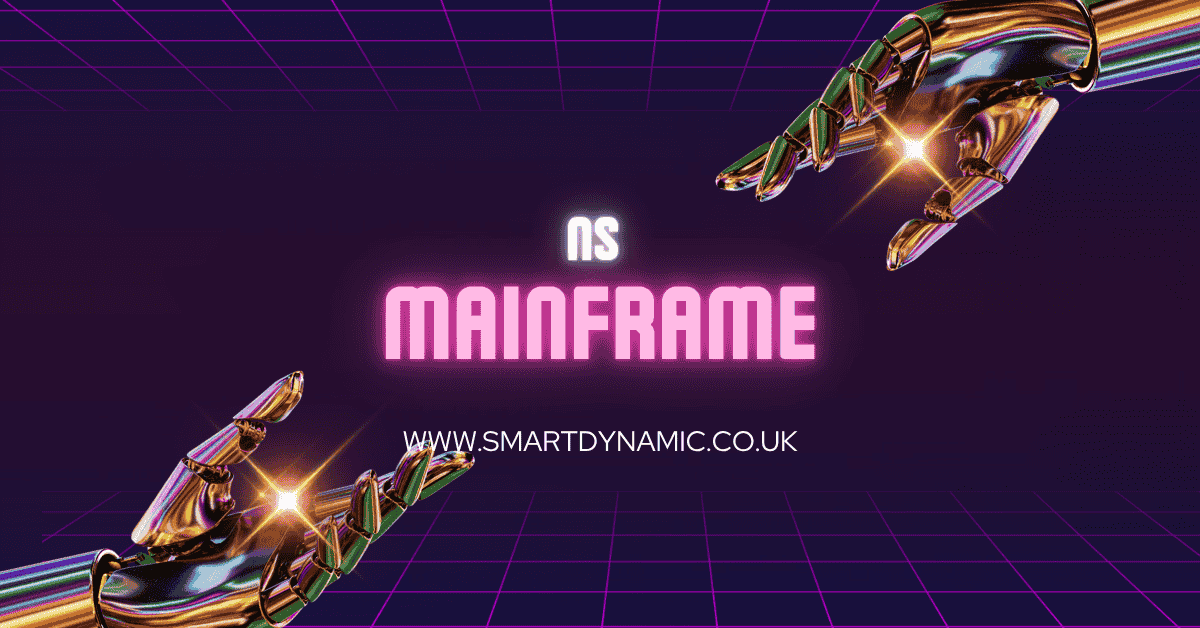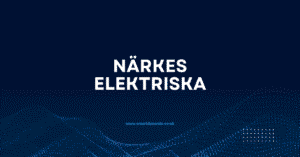In an era dominated by cloud-native applications and agile development, the term “mainframe” might sound like a relic from a bygone age. Yet, for countless global enterprises, the mainframe remains the silent, powerful heart of their most critical operations. The NS mainframe, a term often referring to the robust systems deployed by organizations like Norfolk Southern or within specific “namespace” environments, exemplifies this enduring power. Far from being a dinosaur, these systems are evolving, integrating with modern architectures to deliver unparalleled reliability, security, and performance for mission-critical systems.
This article delves deep into the world of the NS mainframe, exploring its technical underpinnings, its undeniable benefits, the challenges it faces, and its exciting future in a hybrid world.
The Unwavering Importance of Mainframes in Modern Enterprises
Why do mainframes persist? The answer lies in their unique value proposition. For sectors like finance, healthcare, and logistics—where a single minute of downtime can result in millions in losses—the IBM mainframe and its specialized counterparts offer rock-solid stability. These systems are engineered for zero-downtime, with redundant components that can be “hot-swapped” without interrupting service.
They are the definitive workhorses for high-volume transaction processing (OLTP). When you swipe your credit card, book a flight, or, in the case of a railway mainframe, schedule a cross-country freight train, there’s a high probability a mainframe is processing that transaction in the background. They handle colossal data loads with consistent speed, a feat that distributed systems often struggle to match cost-effectively for specific, large-scale workloads.
Key Features of the NS Mainframe
An NS mainframe, whether a specific Norfolk Southern IT system or a namespaced environment, is characterized by a set of powerful features:
-
Unmatched Reliability and Availability: Designed for 99.999% (or “five nines”) uptime, these systems ensure that critical operations are never halted.
-
Massive Scalability: Mainframes can scale vertically (by adding more power to a single system) to process billions of instructions per second, effortlessly handling peak loads.
-
Fortress-Like Security: Mainframe security is a gold standard. With features like pervasive encryption (encrypting all data all the time) and sophisticated access control systems like RACF, they are notoriously difficult to breach.
-
Backward Compatibility: A system programmed in COBOL programming language decades ago can often still run on a modern mainframe without modification, protecting massive investments in legacy software.
-
Centralized Management: Unlike distributed server farms, a mainframe provides a single, centralized point of control for complex IT environments, simplifying operations and governance.
How the NS Mainframe Works: A Technical Overview
At its core, a mainframe is a centralized system that processes immense batches of transactions. Imagine the logistical nightmare of managing a railway network. The Norfolk Southern IT system must coordinate schedules, track assets, manage freight bills, and ensure safety.
-
Transaction Initiation: A request, such as “update train location for Train 123,” is sent to the mainframe.
-
Processing: The mainframe’s operating system (like z/OS) receives the transaction. It may interact with a hierarchical database like IMS or a relational one like Db2. The logic, potentially written in COBOL or PL/I, executes the request.
-
Data Integrity: The mainframe ensures “ACID” properties (Atomicity, Consistency, Isolation, Durability). If a transaction fails partway, the entire transaction is rolled back, preventing data corruption.
-
Output and Integration: The result is returned to the user or fed into other systems. Modern mainframes excel at hybrid cloud integration, using APIs to share data with cloud-based analytics platforms or customer-facing web applications.
This architecture ensures that the state of every asset and transaction is consistent and accurate across the entire enterprise computing landscape.
Tangible Benefits of Using an NS Mainframe
The ROI of a mainframe is clear for organizations with specific needs:
-
Cost-Effectiveness for High-Volume Workloads: While acquisition costs are high, the total cost of ownership (TCO) for processing tens of thousands of transactions per second can be lower than using thousands of distributed servers.
-
Ultimate Resilience: For mission-critical systems, the ability to perform hardware and software maintenance without taking the system down is invaluable.
-
Enhanced Security Posture: The inherent mainframe security model provides a level of data protection that is expensive and complex to replicate in distributed environments.
-
Long-Term Investment Protection: Organizations can modernize their infrastructure without throwing away decades of investment in business logic and applications.
Common Challenges & Limitations
Despite their strengths, mainframes present significant challenges:
-
Skills Gap: The pool of developers proficient in COBOL programming and mainframe operations is aging and shrinking, creating a talent crisis.
-
Perceived High Costs: Hardware and software licensing costs can be substantial, leading to “sticker shock.”
-
Agility and Integration: Traditionally, mainframes were not designed for the rapid DevOps cycles common today. Integrating them with modern cloud-native applications requires careful planning.
-
Vendor Lock-in: The market is dominated by IBM, which can limit negotiating power.
NS Mainframe vs. Competitors
The primary alternative to a mainframe is a scale-out architecture using commodity servers and cloud platforms. The choice isn’t about which is “better,” but which is more appropriate.
-
Scale-Up vs. Scale-Out: A mainframe scales up (more power in one box), offering simplicity and consistency. Cloud platforms scale out (more boxes), offering granular flexibility.
-
Workload Type: Mainframes excel at high-throughput, transactional, and data-intensive batch jobs. Cloud-native systems are better for scalable web services, AI/ML, and unpredictable workloads.
-
TCO: For steady, high-volume workloads, a mainframe’s TCO can be superior. For spiky, evolving workloads, the cloud’s pay-as-you-go model wins.
Mainframe Modernization Trends
The future of the NS mainframe is not its replacement, but its evolution. Mainframe modernization is the key theme, with several strategic approaches:
-
Hybrid Cloud Integration: Tools like IBM Z and Cloud Modernization Stack allow mainframes to act as secure, powerful data and transaction engines within a hybrid cloud model.
-
Application Modernization: Refactoring legacy systems by exposing core business functions as APIs, enabling them to be consumed by modern mobile and web applications.
-
Offloading and Compartmentalization: Moving less critical workloads to distributed systems or using specialized partners like Kyndryl to manage mainframe operations, freeing internal IT to focus on innovation.
-
AIOps: Infusing AI for Operations into the mainframe environment to predict failures, automate routine tasks, and optimize performance.
The Future of the NS Mainframe
The NS mainframe has a bright future as a specialized component of a diversified IT strategy. We will see:
-
Deeper Cloud Integration: Seamless data flow between mainframe and cloud, with the mainframe serving as the “system of record.”
-
Quantum-Safe Cryptography: As quantum computing emerges, mainframes will be at the forefront of implementing new, quantum-resistant encryption standards.
-
Specialized Co-Processors: Increased use of on-chip accelerators for AI, encryption, and data compression, further boosting performance for specific tasks.
Expert Insights & Recommendations
Industry analysts at firms like Polaris Research consistently highlight that the most successful enterprises treat their mainframe as a strategic asset, not an albatross.
Our Recommendations:
-
Assess, Don’t Assume: Conduct a thorough application portfolio analysis. Determine what truly needs to stay on the mainframe and what can be modernized or offloaded.
-
Invest in Skills: Bridge the skills gap by cross-training full-stack developers in mainframe technology and investing in automated tools that simplify mainframe development.
-
Embrace a Hybrid Model: Strategically use the mainframe for what it does best and leverage the cloud for agility and innovation. The two can, and should, coexist.
-
Prioritize Security: Continually evaluate and update your mainframe security policies to counter evolving threats, leveraging the platform’s innate strengths.
Frequently Asked Questions (FAQs)
Q1: What does “NS” stand for in NS Mainframe?
A: It can have two common meanings. It often refers specifically to the Norfolk Southern IT system, which uses mainframes to manage its vast railway operations. More generally, in IT, “NS” can stand for “Namespace,” referring to a logical partitioning of resources within a mainframe environment.
Q2: Are companies still buying new mainframes?
A: Absolutely. IBM continues to release new models of its Z-series mainframes, and companies in finance, insurance, and logistics regularly invest in them to refresh their infrastructure and handle growing transaction volumes.
Q3: Is COBOL a dead language?
A: Far from it. While few new projects start with COBOL, there are an estimated 200-220 billion lines of COBOL programming code in production worldwide, processing over $3 trillion in daily commerce. The demand for developers to maintain and modernize these systems remains high.
Q4: Can a mainframe be hacked?
A: No system is 100% invulnerable. However, due to its proprietary architecture, pervasive encryption, and mature security subsystems, the IBM mainframe is considered one of the most secure computing platforms in existence. Most breaches occur through compromised user credentials or poor operational practices, not by “hacking” the mainframe itself.
Conclusion
The NS mainframe is a testament to the enduring value of engineered excellence. It is not a competitor to the cloud but a powerful ally in a holistic enterprise computing strategy. For the most demanding, data-intensive, and mission-critical systems, it offers a blend of security, reliability, and performance that remains unmatched. Through strategic mainframe modernization and hybrid cloud integration, this foundational technology is being reinvented to power the enterprises of today and tomorrow, proving that some classic engines, when well-maintained and evolved, only become more valuable with time.








2 thoughts on “NS Mainframe: The Unseen Engine of Modern Enterprise Computing”